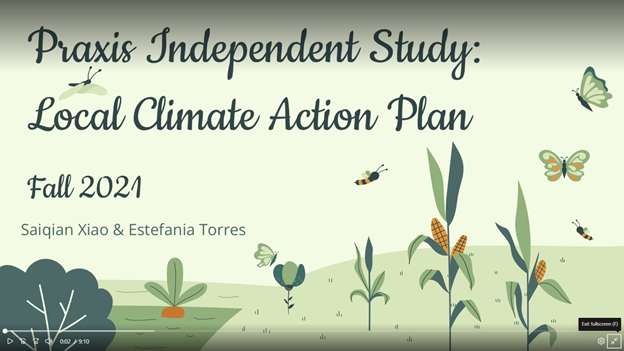Julia completed an alternative assignment and reflected about the documentary “Adelante”
The film, Adelante, provided insight into the lives of immigrants as they migrate to the
United States for the first time. This documentary was shot in Norristown, so we were able to
complement the knowledge we gained from our readings with the personal stories from a town
very near to Bryn Mawr. It was quite beneficial to get to hear and view from a local perspective
how migration impacts not only the immigrants themselves, but also the communities they enter.
Adelante offered a new emotional element, and additional feeling onto the textual information
we have gathered from our class texts. After digesting many stories of hardship and challenges as Mexicans move into the USA, it was quite refreshing to witness a community welcoming these individuals with open arms. Quite often, the rigidity of the Catholic Church is viewed as exclusionary, and unfriendly. This screening directly opposed this viewpoint, as we see Irish American Catholics working with Mexican migrants to build a comfortable and safe space in Norristown. As we watched throughout Adelante, accepting the Mexican families into their church was an act that benefitted all involved. The Mexican families brought their culture with them, and ultimately positively influenced the Irish American community by teaching them new traditions and values. The bond between the Mexican migrants and the American locals strengthened through their equal devotion to their faith and religion. This relationship originated on a commitment to the greater church organization, and the common belief to love your neighbor.
Loving your neighbor and building a community with them requires substantial action on
the both ends of the relationship. The immigrants were brave and vulnerable in sharing the
cultural events and meaningful practices that they brought with them from Mexico. The
Norristown natives responded with an open mindedness towards Mexican culture, and a
willingness to recreate the valuable elements that might make their town feel more comfortable
and safe for their new neighbors. Adelante demonstrates this genuine and mutual commitment to creating community through hard work and shared values of love and respect. We even watched a wedding that symbolized this unification of both the Mexican and American cultures and traditions.
This documentary was very impactful. Seeing the feeling and emotion that is connected
to migration is much more powerful than simply reading a story in text. Most importantly, all of
the themes of family, culture, and values were solidified in this film. Adelante successfully
portrayed the hard work and various factors that go into establishing an integrated and safe
community for people from different cultures and backgrounds. We witnessed the passion and
determination that was essential in developing Norristown into an accepting and comfortable
home for Mexican migrants and Irish American locals.

